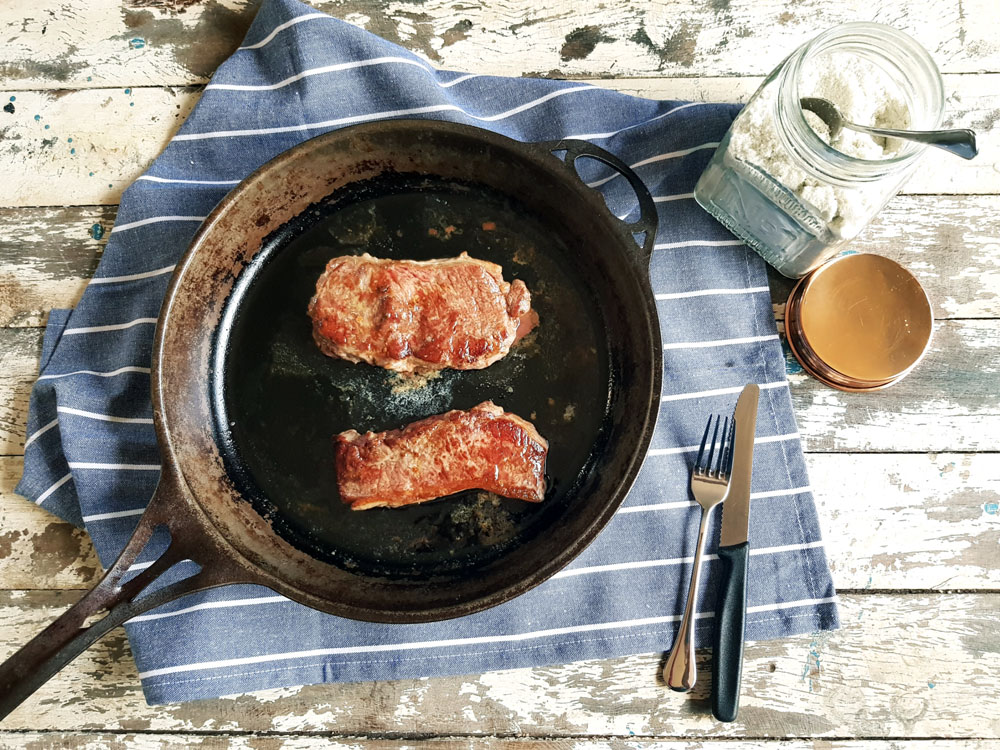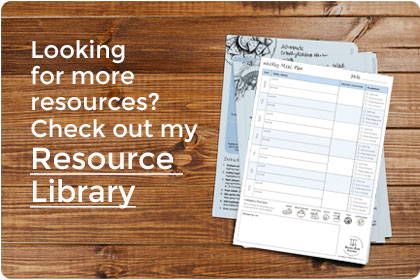Ever wondered how food cooked in cast-iron can become so flavoursome?
This might seem an inconsequential thing for a busy Mum who just wants to get dinner on the table, but stick with me.
It’s worth understanding the ‘why’ and ‘how’ of naturally-created flavour for at least 3 reasons:
- We nourish and delight our families when we serve whole foods that are flavoursome
- We give our children confidence that flavour can be created without relying on artificial ingredients (useful for when they’re adults!)
- You’re not tempted to regard a Teflon pan as an item you can’t live without (at least ahead of a cast-iron one
).
OK, so now you know why I’m keen to share this knowledge with you, let’s chat about how flavour is built during cooking.
It all starts with a process called the Maillard (pronounced my-YAR) reaction.
Even though you might not have heard this term before, you’ve likely been enjoying the results of this reaction your whole life.
I’ll give you a clue …. think foods that have been roasted, baked or fried.
The Maillard reaction relies on 2 important factors – high heat and dry ingredients. And when you apply both to a cooking surface, you form the perfect environment for building flavour.
The results?
The characteristic browning of the food. (The cooking term ‘browning’ is the simplified way we commonly use to describe the Maillard reaction, or part of it).
Really, the most important thing to know is that the Maillard reaction is the creation of new flavours and aromas.
So, it’s not just about the flavours that are naturally present in food, but the formation of additional flavours due to the heating process.
How cool is that?
Consider foods that are utterly irresistible – crispy bacon, a sizzling steak or freshly baked bread.
They taste so good, in part, because of this Maillard reaction.
But did you know that many other foods also undergo the Maillard process? Mouth-watering foods such as chocolate, coffee, and anything deep fried. Each of these foods, once cooked, turn a darker colour and become even more ….. flavoursome!
As MannKitchen puts it, “Essentially, if it tastes good, think Maillard”.
Wow – I’m sold on this whole Maillard reaction thing!
But you might be wondering what this has to do with a cast-iron frypan? (Sorry …. I got a little side-tracked talking about chocolate 
While it is possible to achieve a Maillard reaction on most materials, the cooking surface of a cast-iron frypan means it has an unrivalled ability to retain heat. And prolonging and radiating heat is crucial to achieving “browning”.
So even though you might be able to slip a pile of scrambled eggs out of a Teflon pan without even needing a spatula, Teflon can’t compete with a cast-iron frypan when it comes to flavour. It simply doesn’t have the necessary features to reach and retain high heats for long enough.
That’s why I believe every kitchen would benefit from having at least one cast-iron frypan – the humble workhorse that promotes a flavour reaction when dry ingredients are exposed to high heat.
And because I’m all about cooking simple meals that are bursting with flavour and goodness, I’m happy to shout the virtues of cast-iron from the rooftops!
I’m keen to hear if you own a cast-iron frypan. And if so, what’s your favourite thing to cook in it?
![]()
* For the sake of brevity, I referred only to cast-iron frypans in this post. But wrought-iron frypans have the same flavour-promoting features – at nearly half the weight of their counterparts.







2 Responses
I do have a cast-iron frypan and it definitely produces the best tasting foods. Admittedly I avoid it because I hate to clean it.
You’re not alone Nikola. The majority of people who own a cast-iron frypan use it infrequently because they aren’t confident with cleaning and caring for it, or it’s stuck at the very back of a cupboard and is too heavy to easily get out!
My recommendation is to challenge yourself to leave it sitting on my stove (or nearby), and use it whenever a frypan is needed – frying an egg, sautéing onion, re-heating some leftovers. If it’s in sight, you’re more likely to use it. And if you commit to using it for a few specific tasks, it’s possible you’ll come to enjoy using it more!
As for cleaning, for the majority of foods a quick wipe out with paper towel is sufficient. But if it needs a more thorough clean, wash it with hot (boiling) water – no detergent needed – and then pop it over medium heat for 5 minutes to dry fully. If desired, use a *tiny* amount of tallow, beeswax or grapeseed or flax oil on an old cloth to wipe over all surfaces. Store next to your stove for use again tomorrow!
I hope these tips are helpful, and you come to love using your cast-iron frypan ?